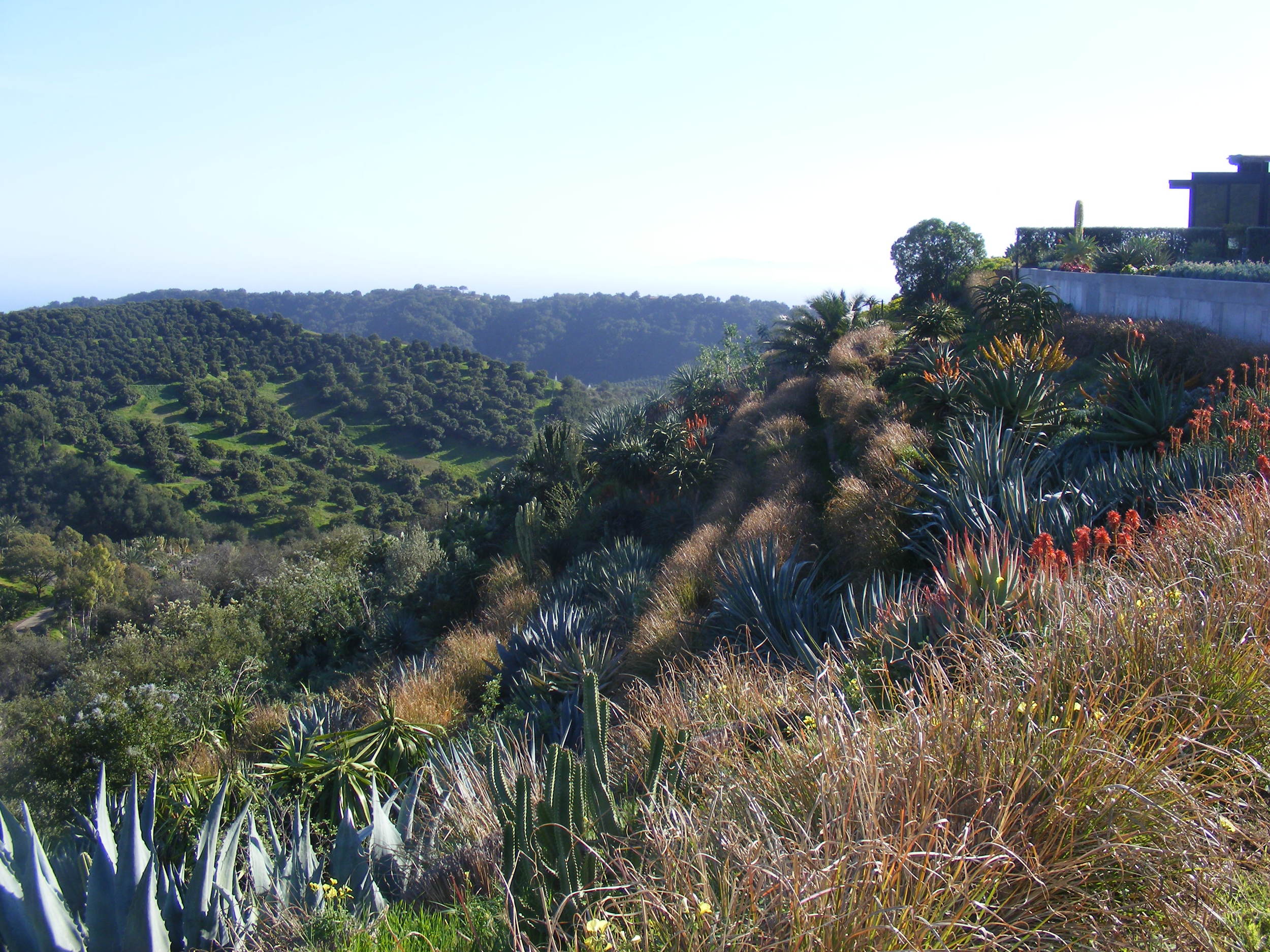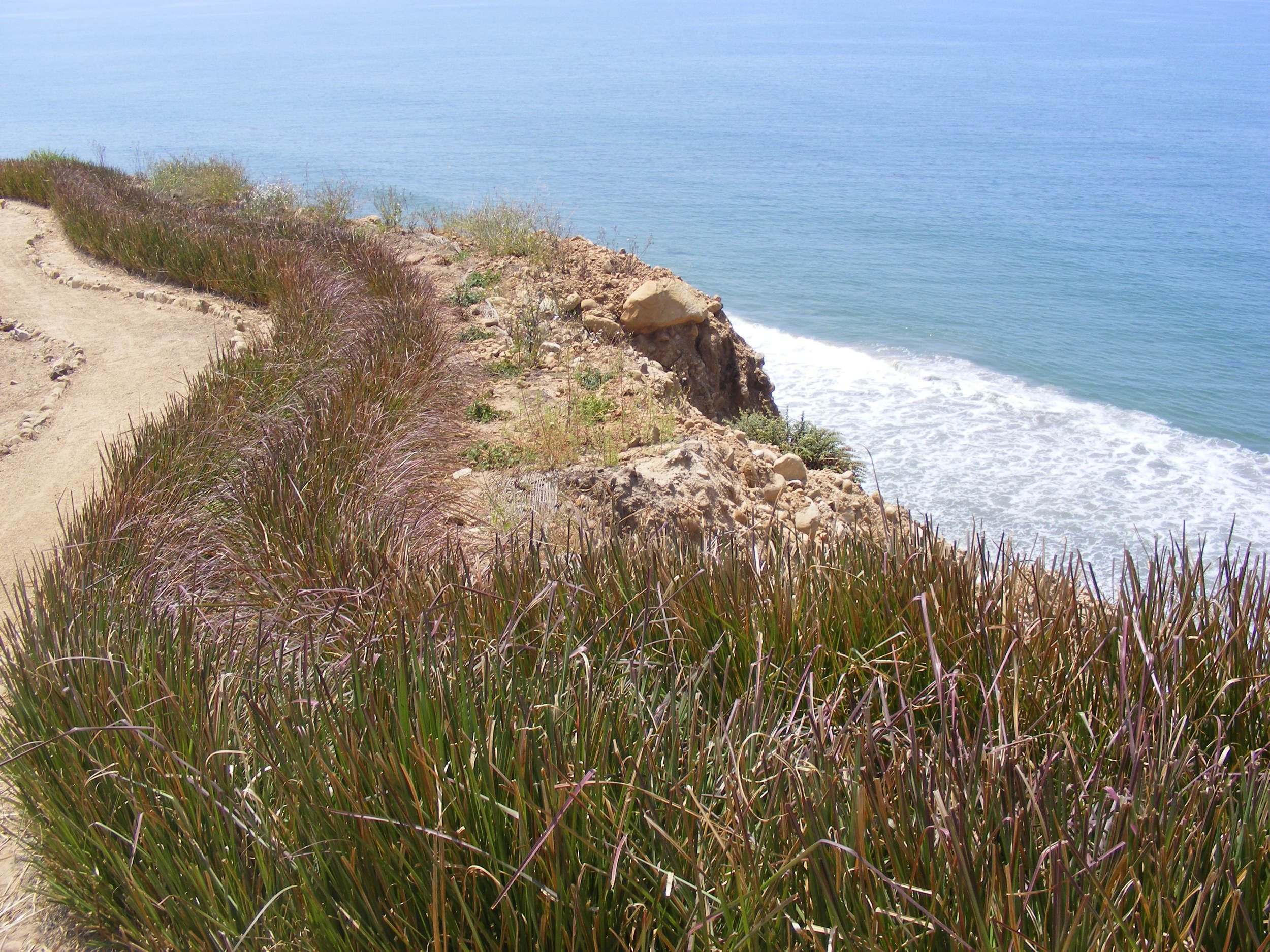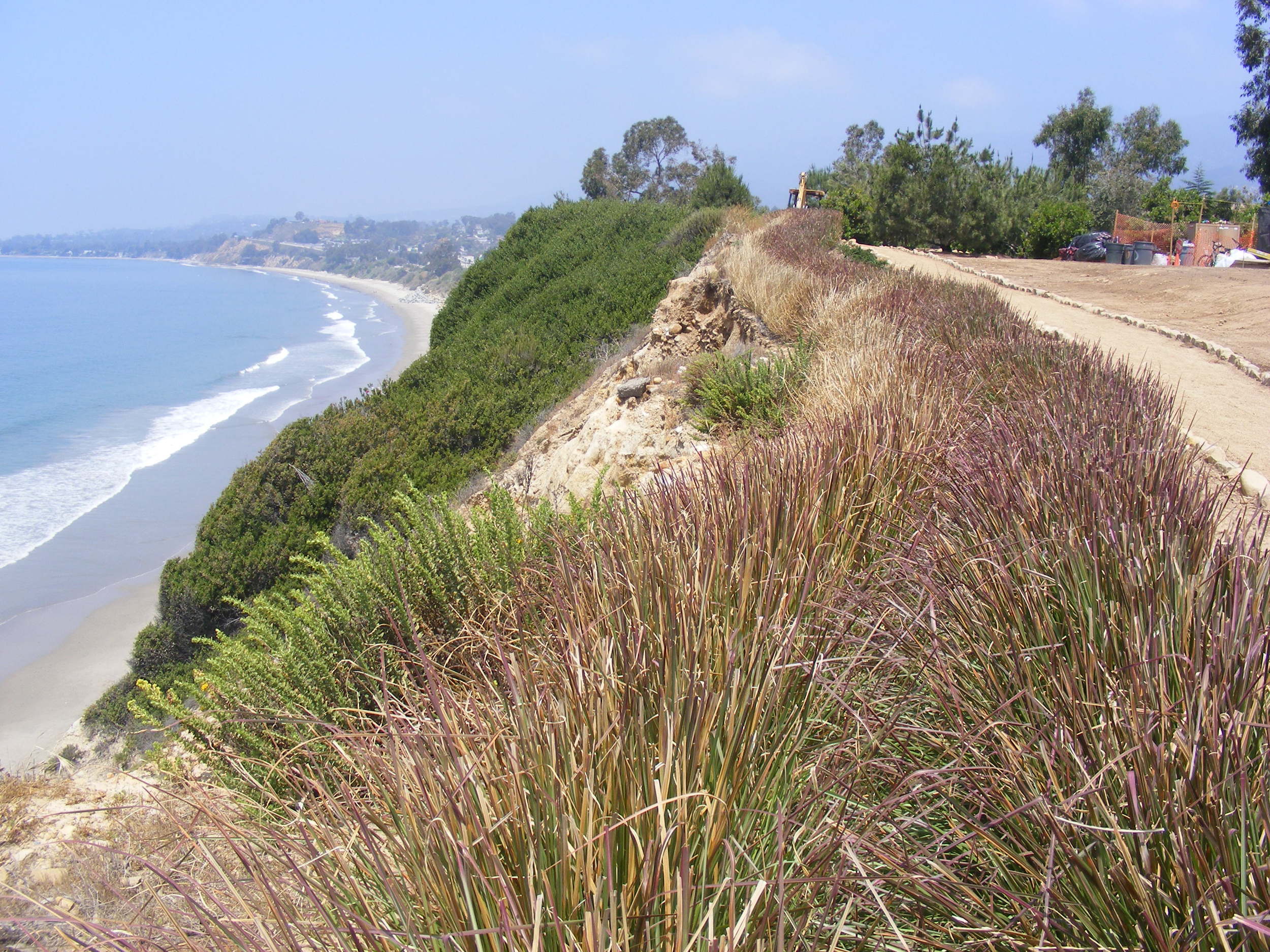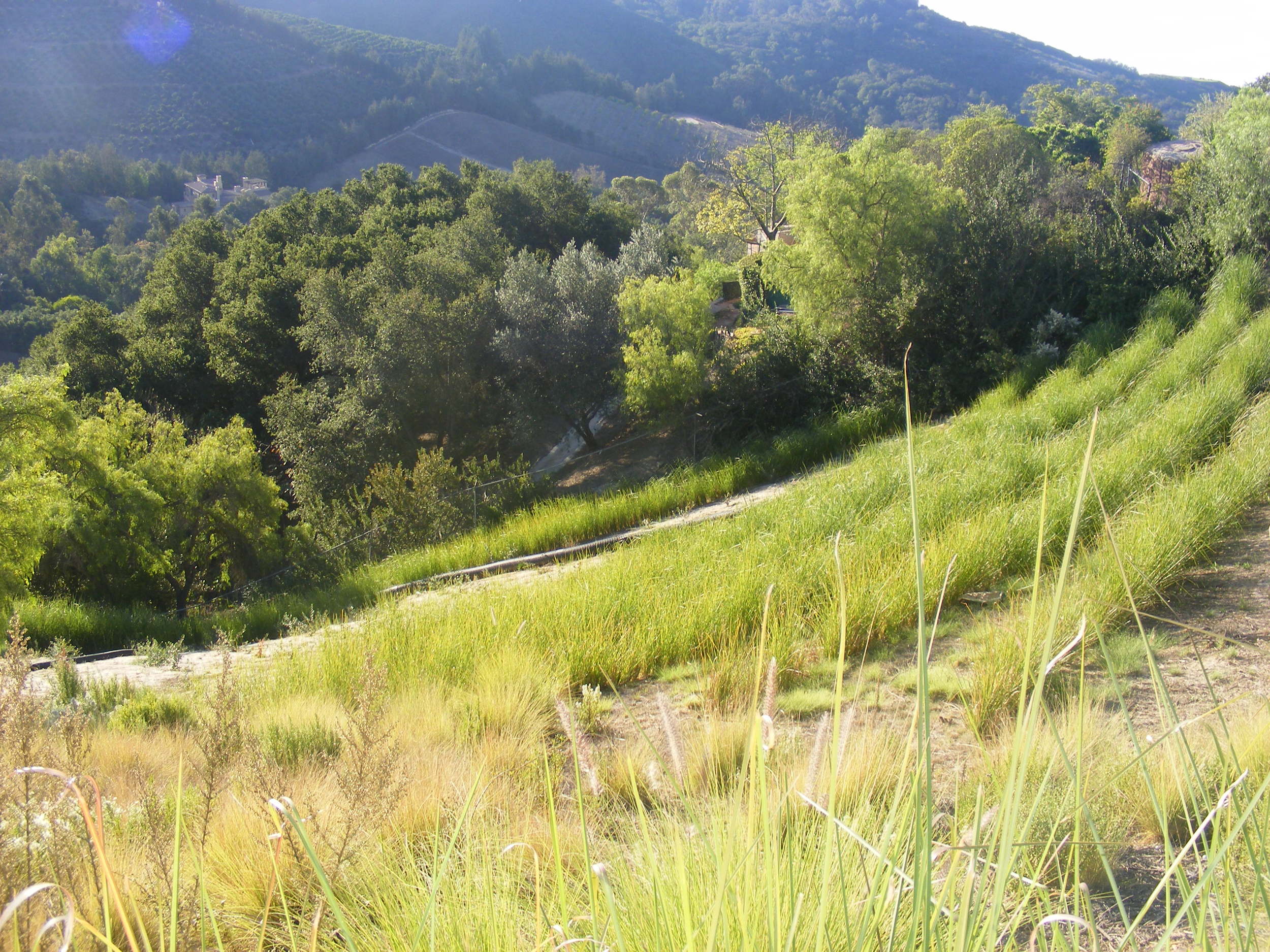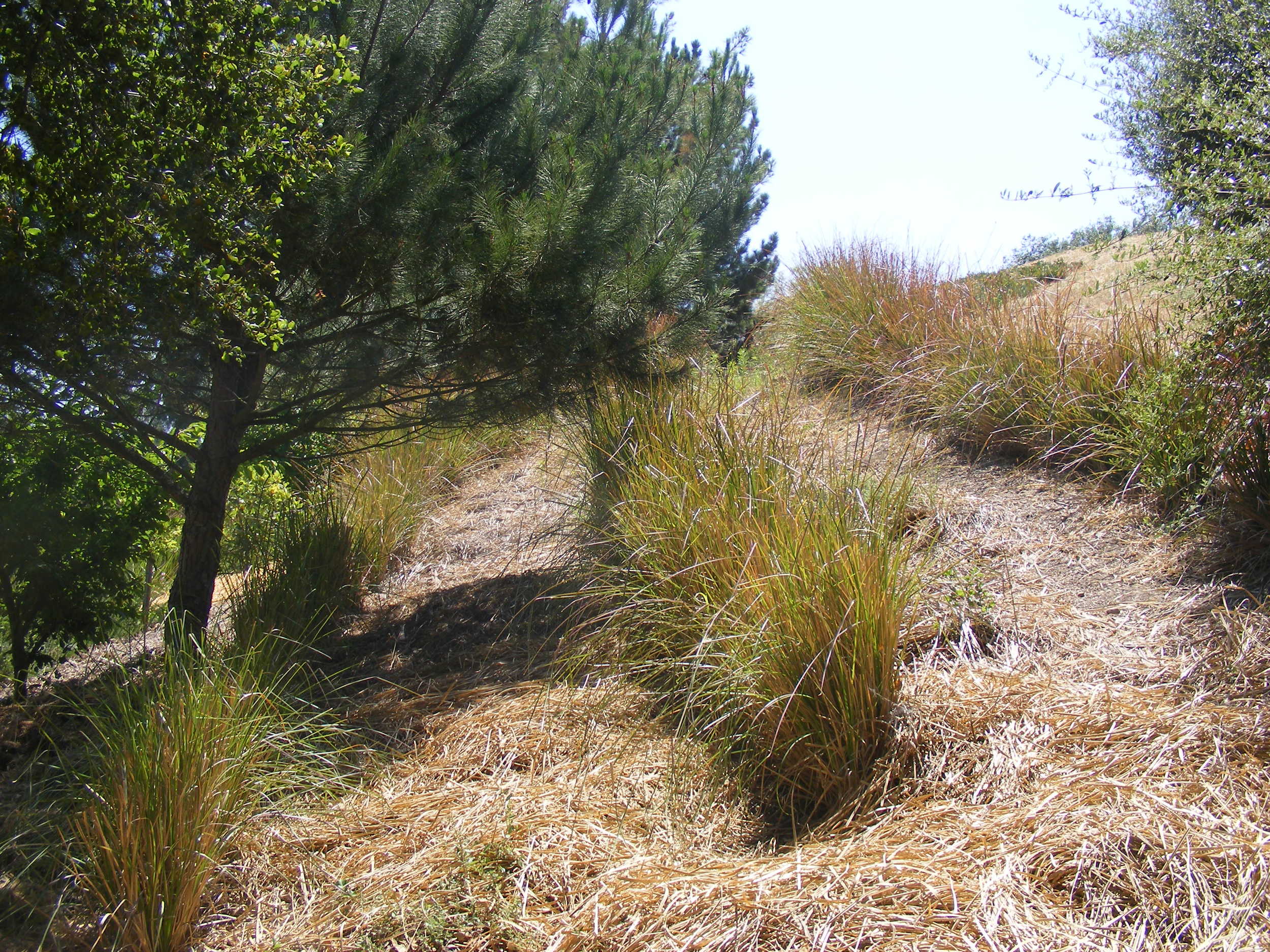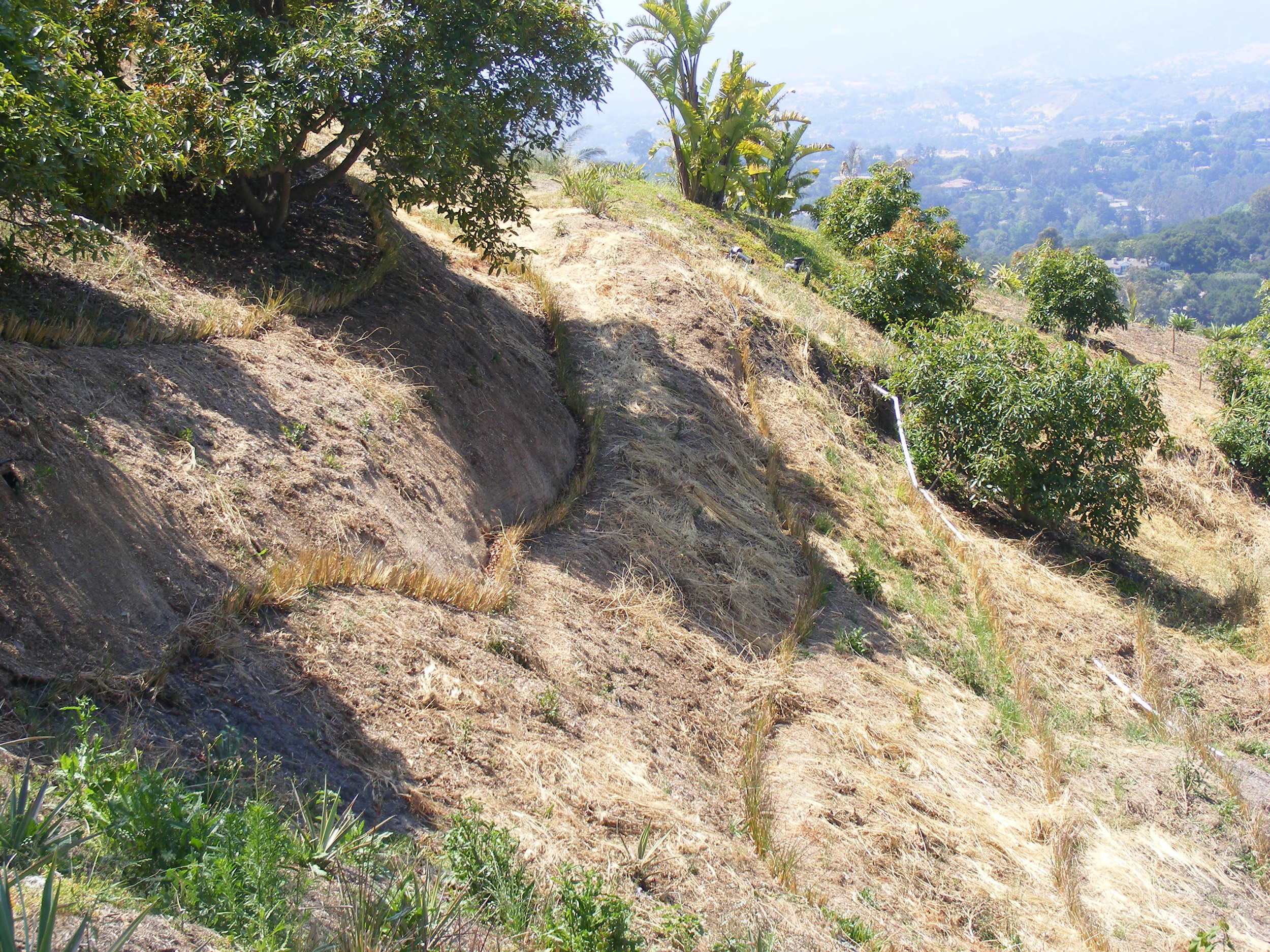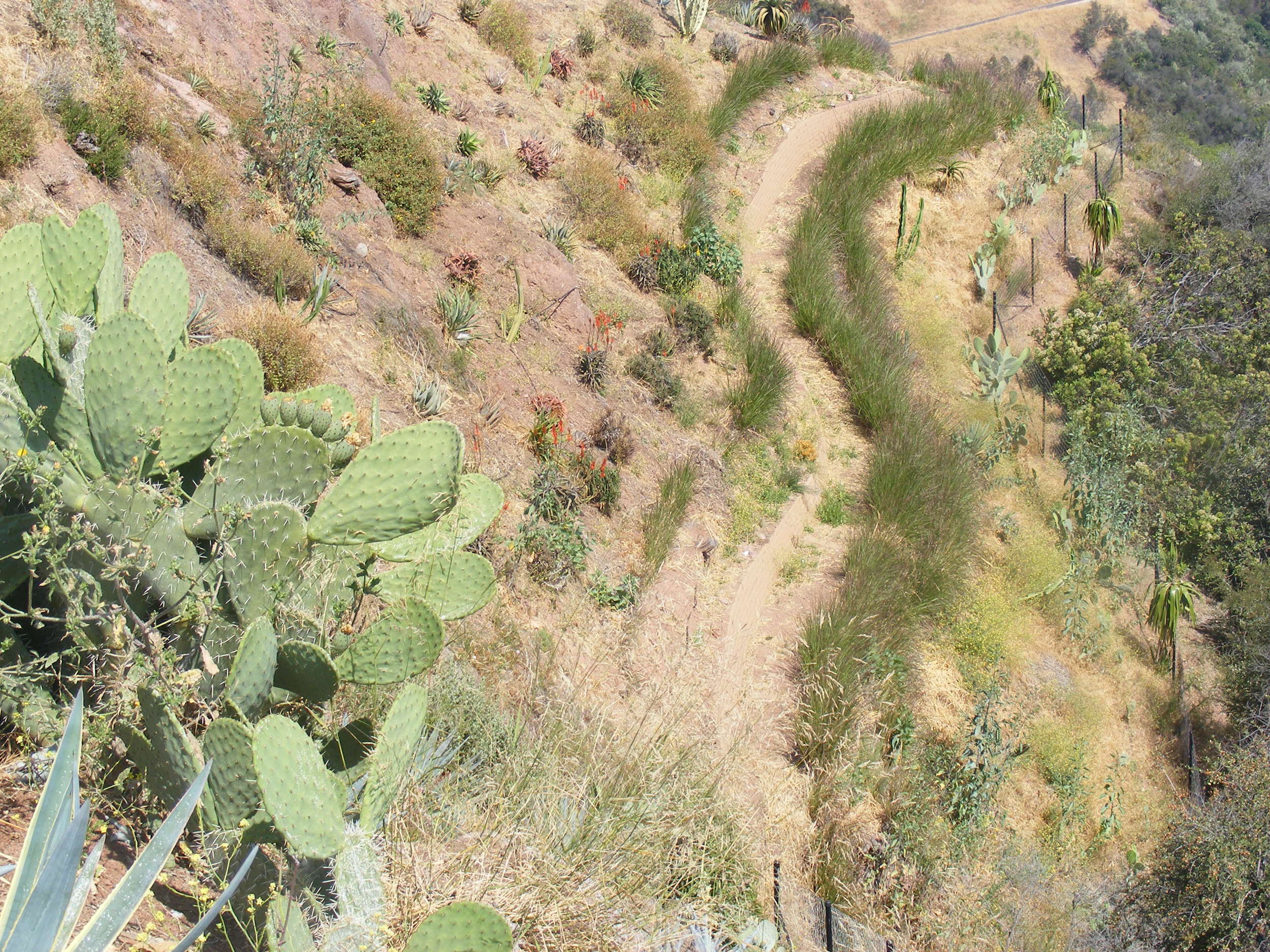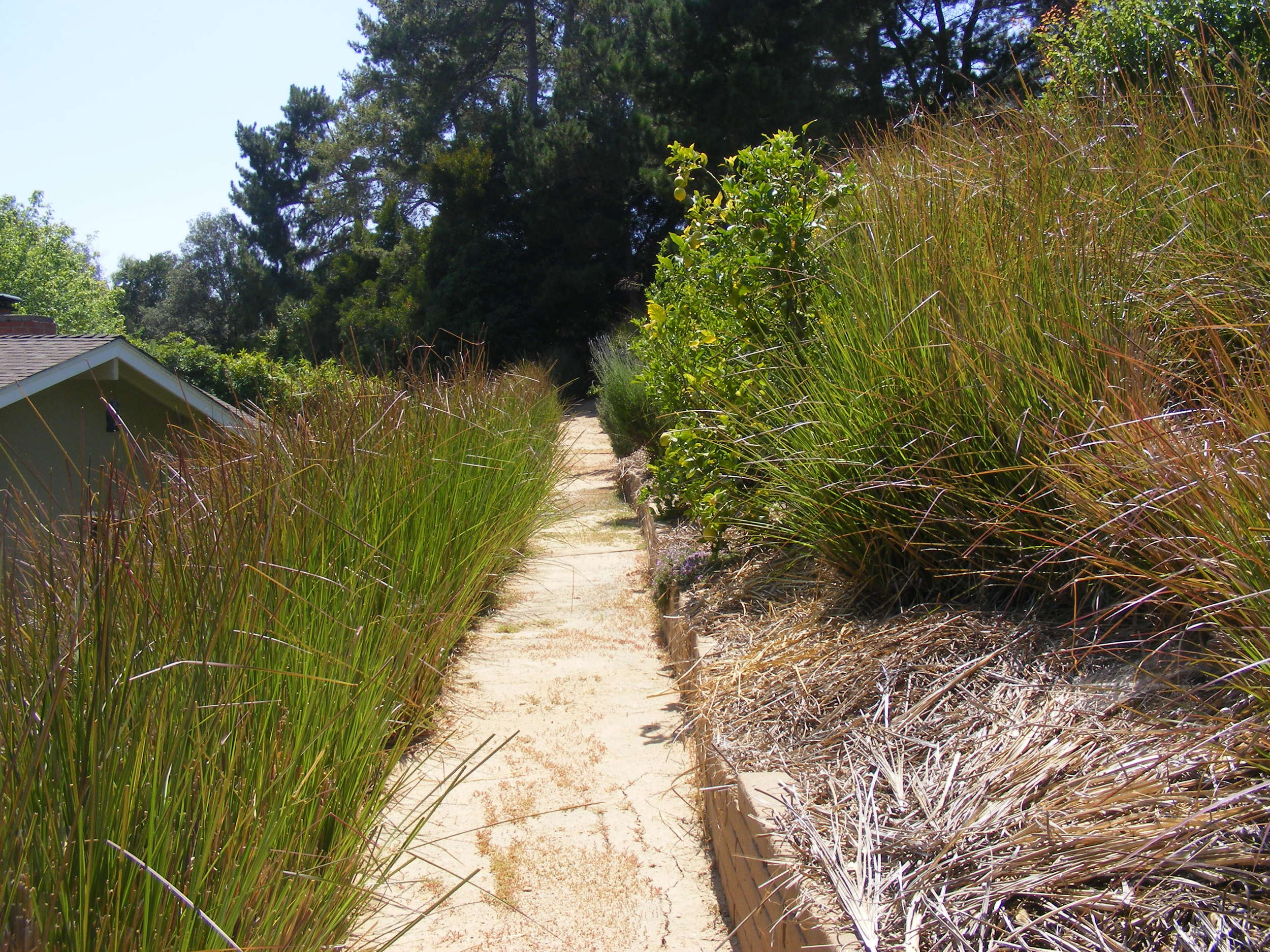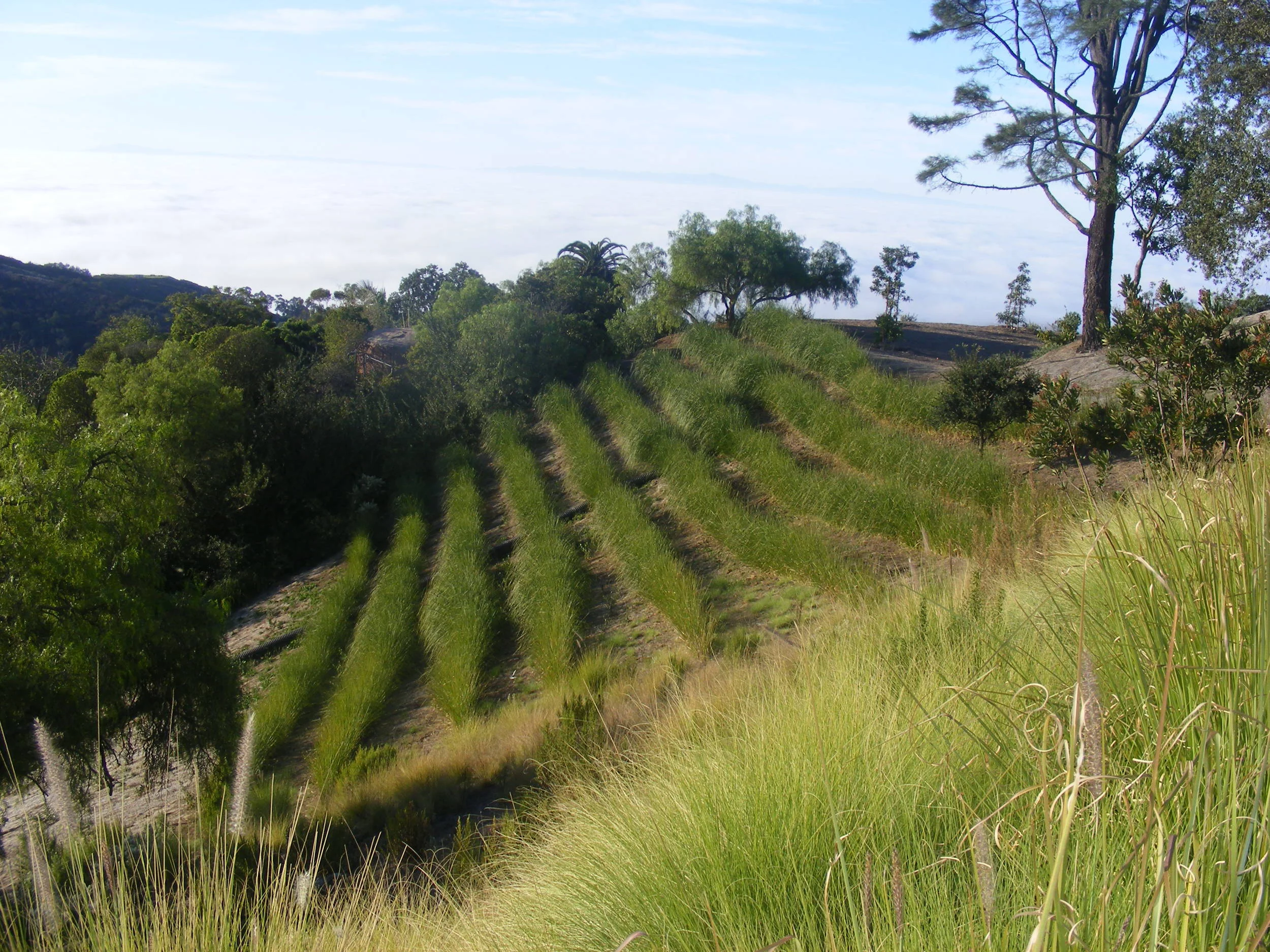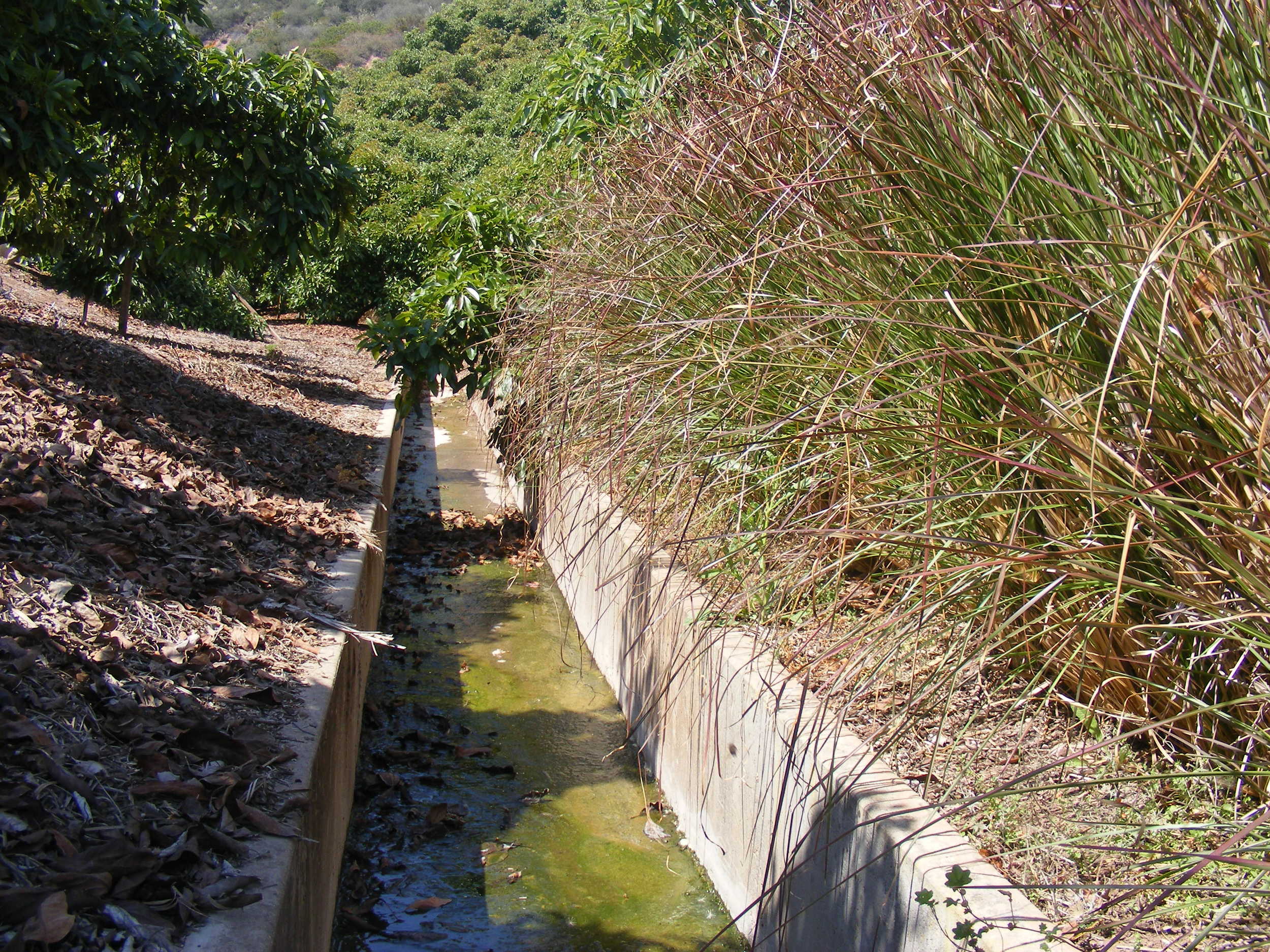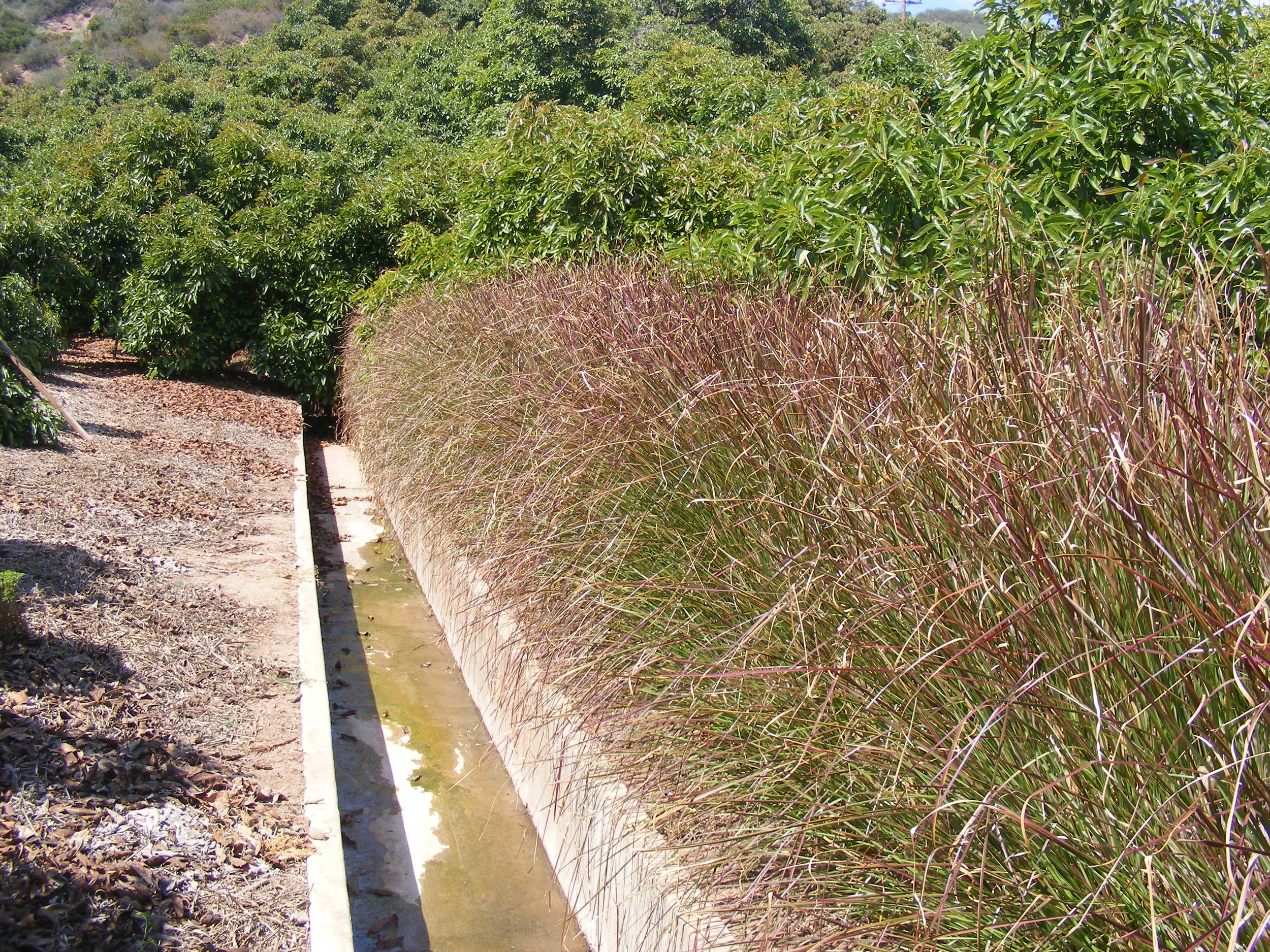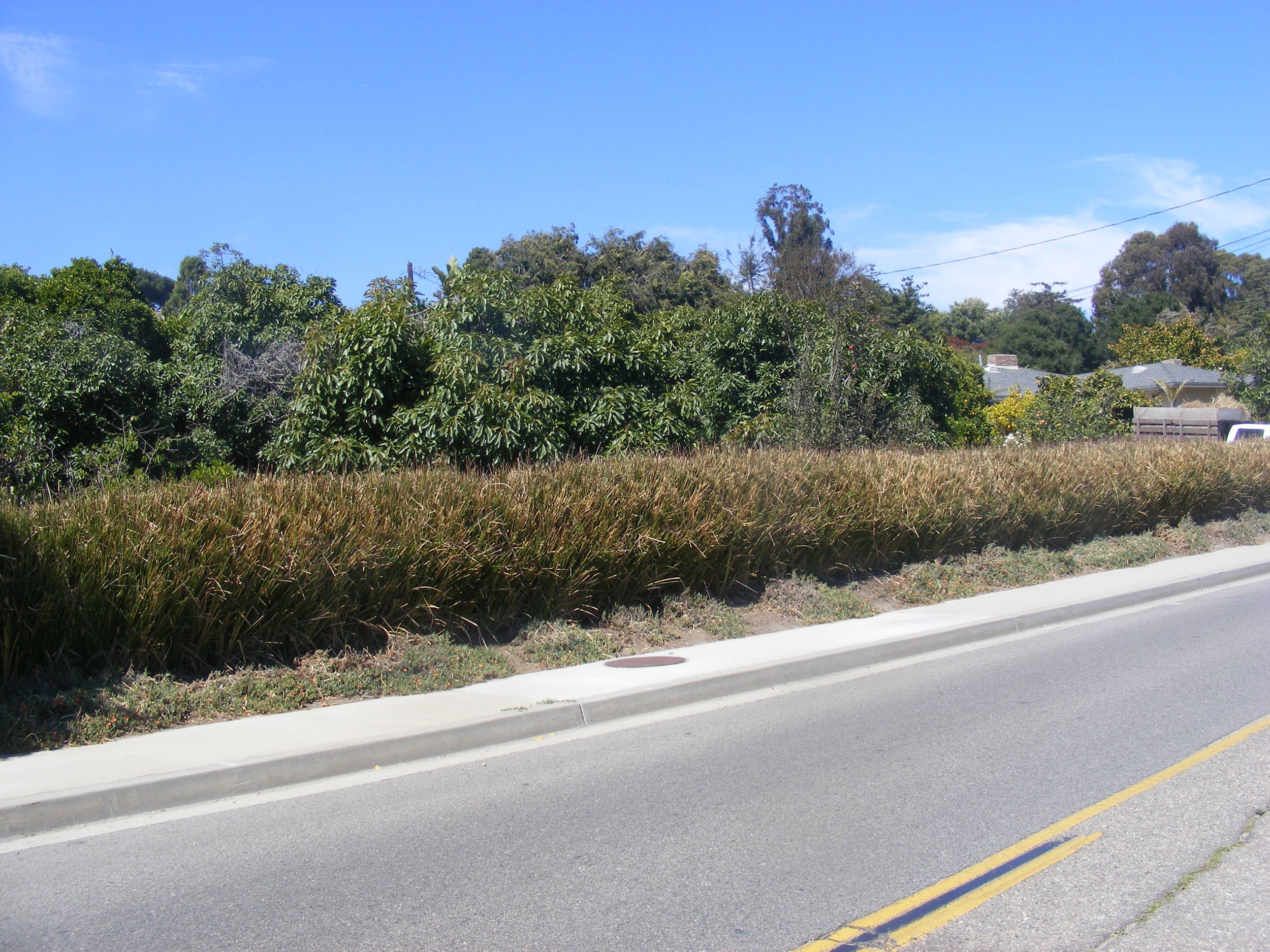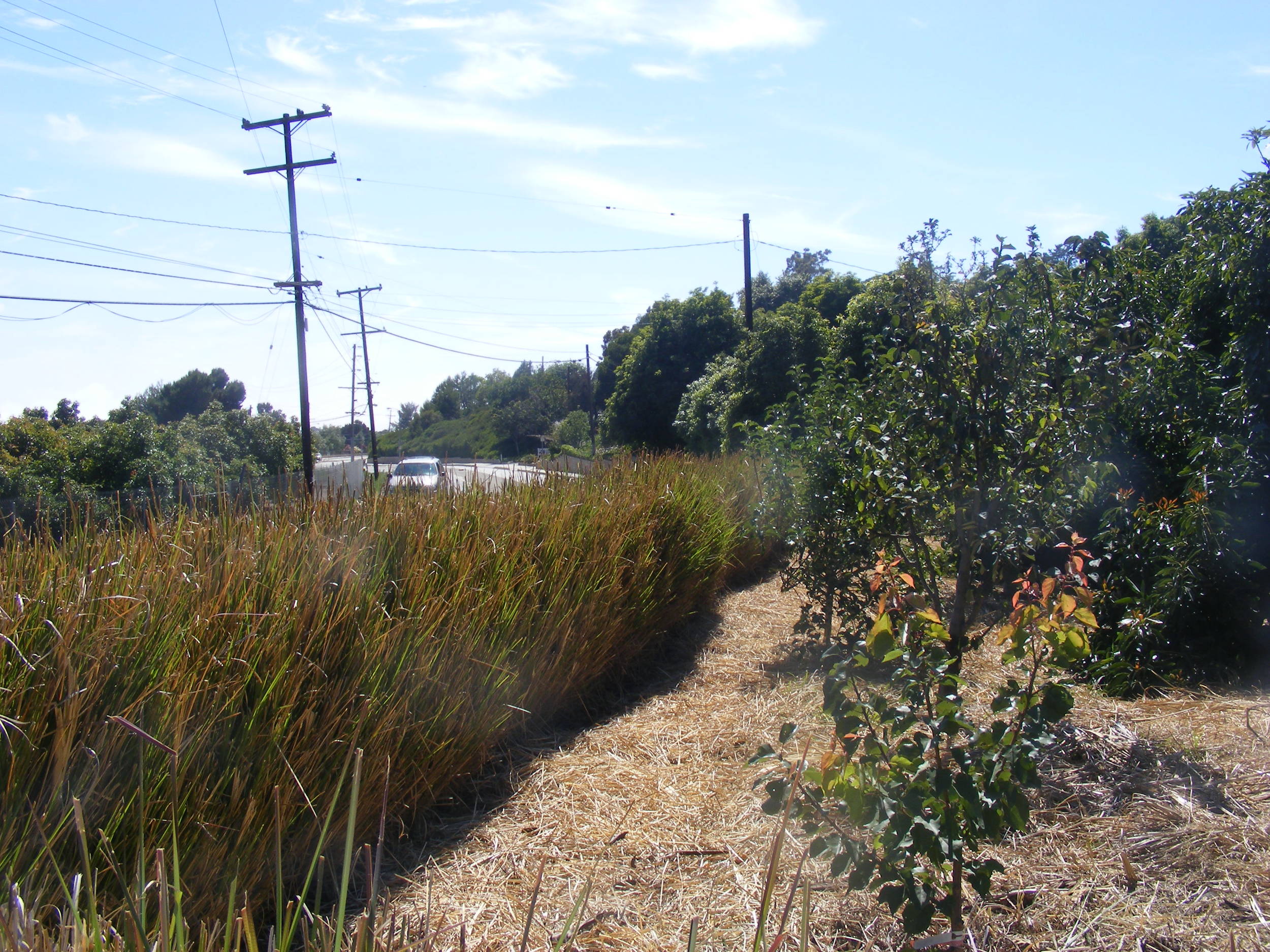THE VETIVER SYSTEM
The Vetiver System utilizes Vetiver grass (Chrysopogon zizanioides 'Sunshine') planted in hedgerows to form a vegetative barrier. Vetiver grass is a non-invasive, upright, rigid, dense and deeply rooted clumping grass with many amazing attributes.
The Vetiver System has been successfully used for soil and moisture conservation, bioengineering, bioremediation and agricultural benefit. Vetiver provides cost effective solutions to soil erosion and slope stabilization problems and the movement of soil and water borne pollutants.
Vetiver grass has been used for over a century in many Asian, African and Caribbean countries for its soil binding technology and is now found in more than 120 countries throughout the tropics and sub-tropics.
We have been growing Vetiver grass and implementing the Vetiver System throughout California for almost 20 years with more than one hundred successful projects. The Vetiver Network International (TVNI) awarded Doug Richardson, owner of Drylands Farming Company, with their 2008 Certificate for Technical Excellence for his work with the Vetiver System.
Much of the plantable acreage available in Southern California and elsewhere for dryland crops is on moderately sloping to steeply sloping land where erosion and slope stability are important concerns. Vetiver is ideally suited for crop plants planted in rows on the contour of a slope because it is best planted in a hedge along a contour to both capture runoff and provide strong rooting anchorage against slipping.
Planted in between crop plants it provides protection without competing with the adjacent crop plants due to Vetiver’s vertical root architecture. In fact the Vetiver grass roots both provides a rich rhizophere with enhanced nutrient availability for the neighboring plants and traps subsurface water on the uphill side of the Vetiver hedge, which increases the availability of water to the crop plants. Creating natural terraces the Vetiver hedge also functions as a nurse crop on difficult sites by providing protection from extreme sun and wind.
In California, bareroot slips can be planted from late winter to early fall. Container plants can be planted year round. Vetiver grows rapidly and can provide protection after only one growing season. Drylands Farming Company sells both rooted one-gallon container plants and bareroot slips which are comprised of three shoots. We offer expert and experienced consulting, design and installation supervision of the Vetiver System.
Vetiver grass is clumping, does not flower or produce seed. This means it stays where you plant it - growing larger and denser and sending its roots deep into the earth. Vetiver grass is rapid growing, suitable for many climates and soils and is itself a low water use plant that does not compete for water with adjacent plantings due to its root system which grows straight down. Vetiver grass is amazingly resilient, coming back from the roots after being burned to the ground by fire, subjected to frost or affected by drought.
We proudly acknowledge the valuable information we have gained available at The Vetiver Network International
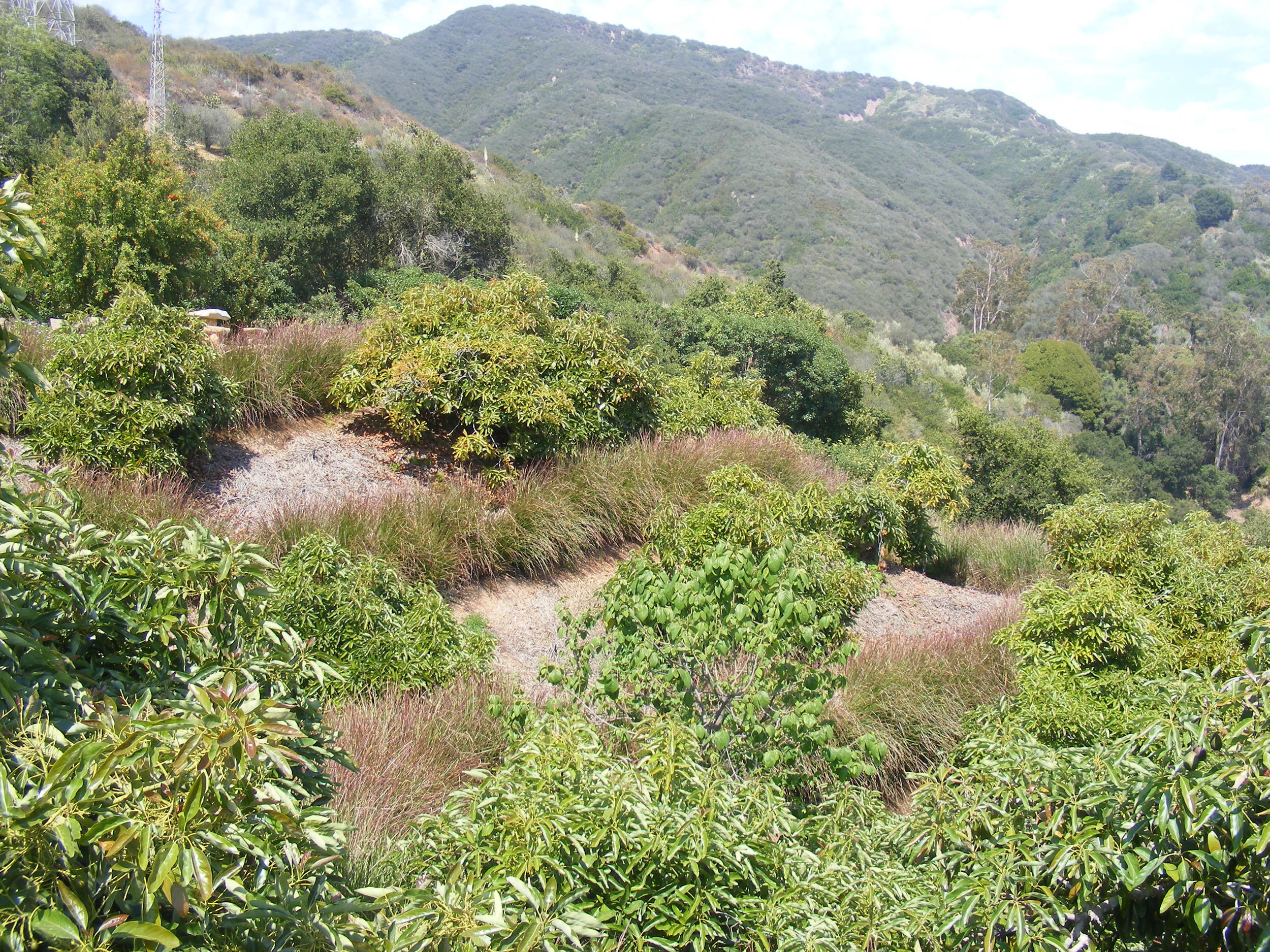
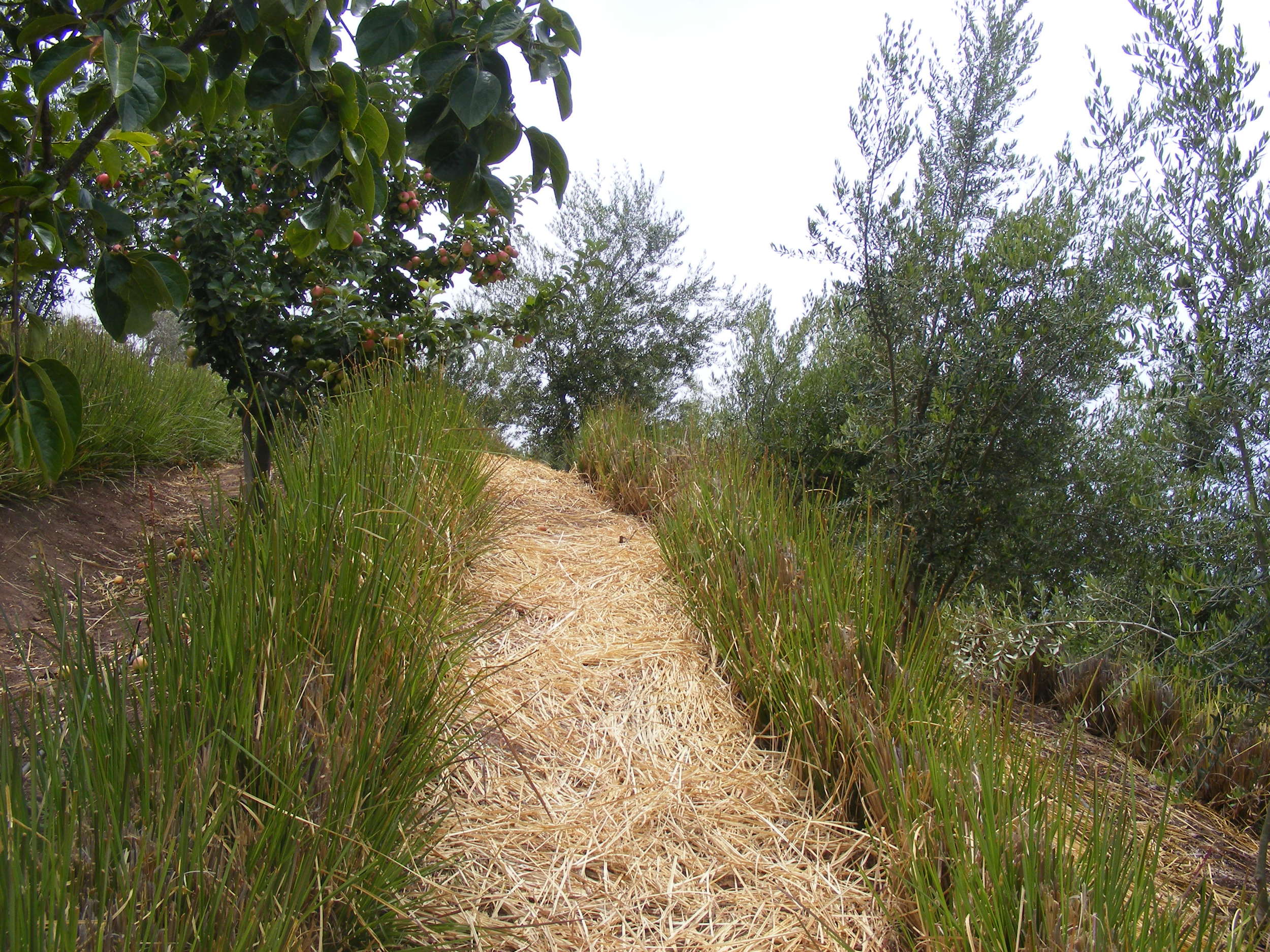
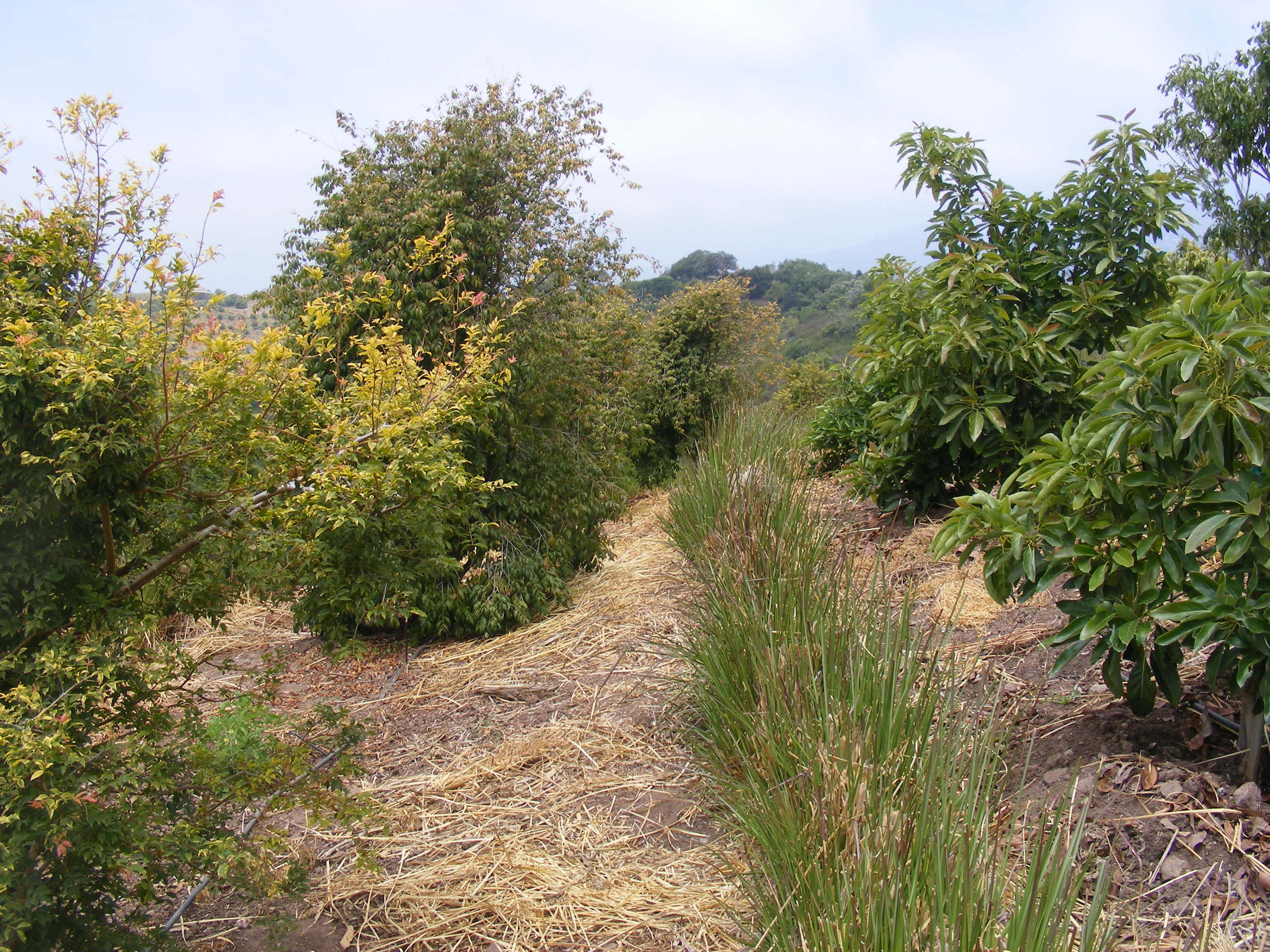
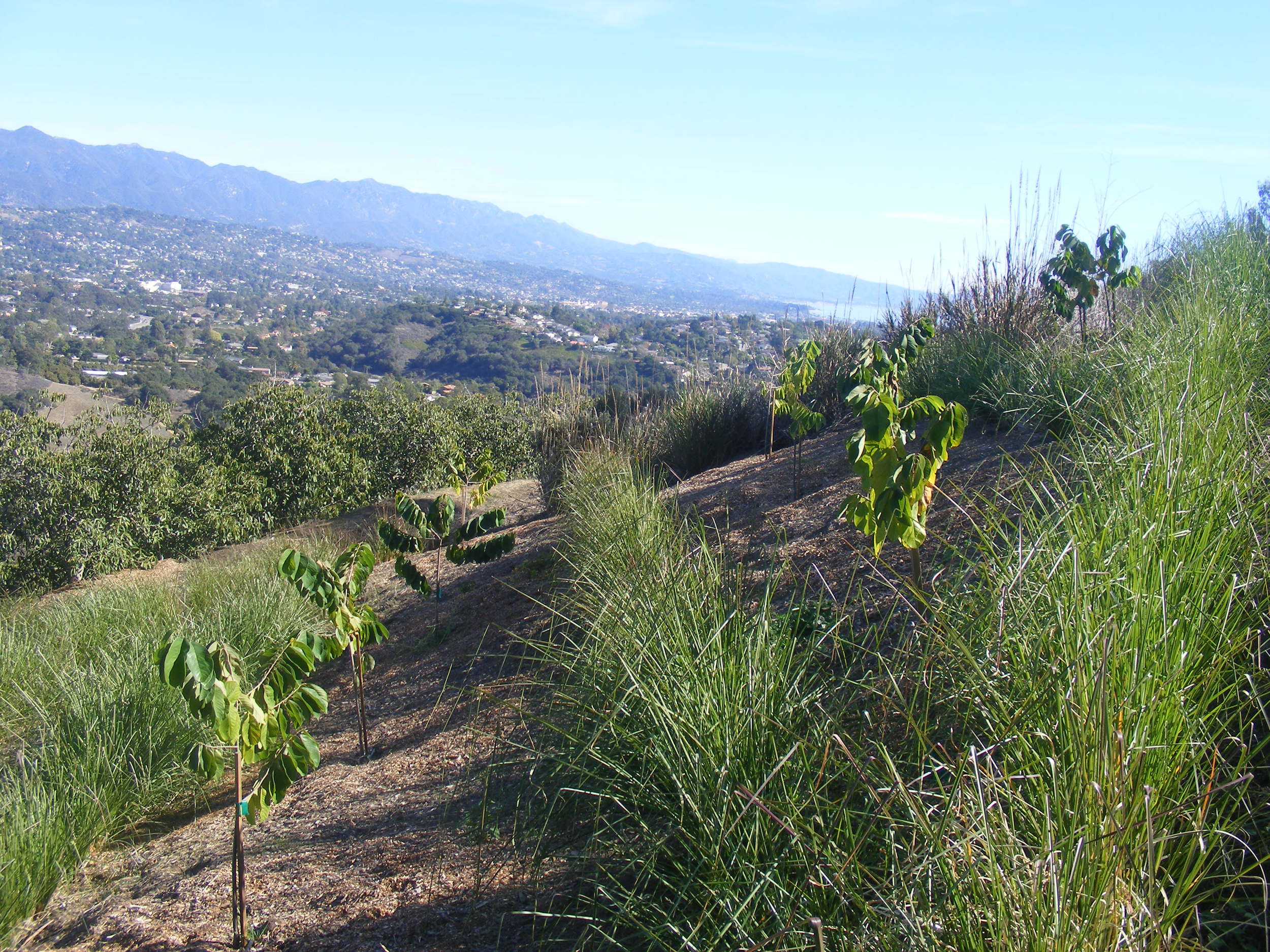
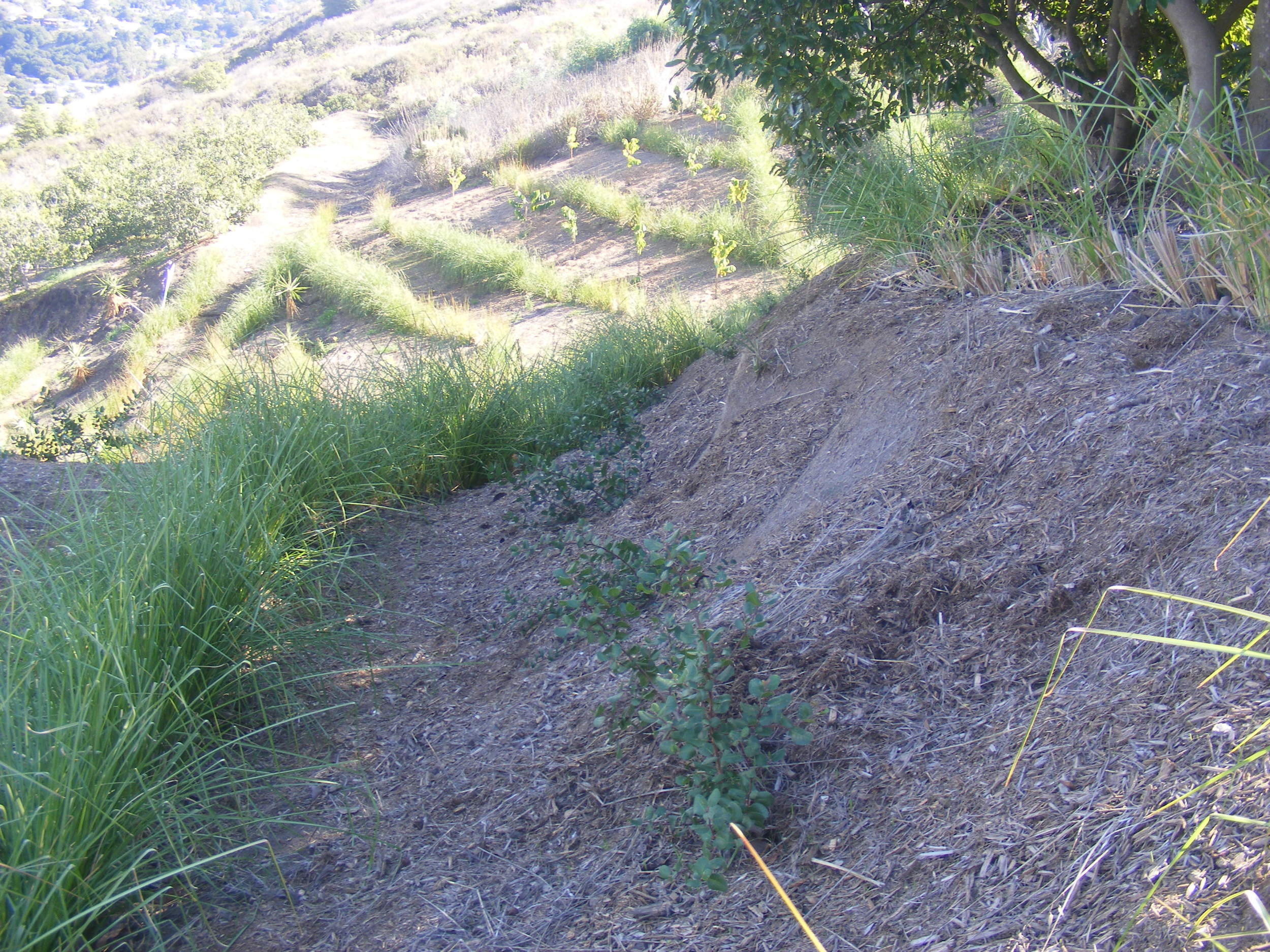
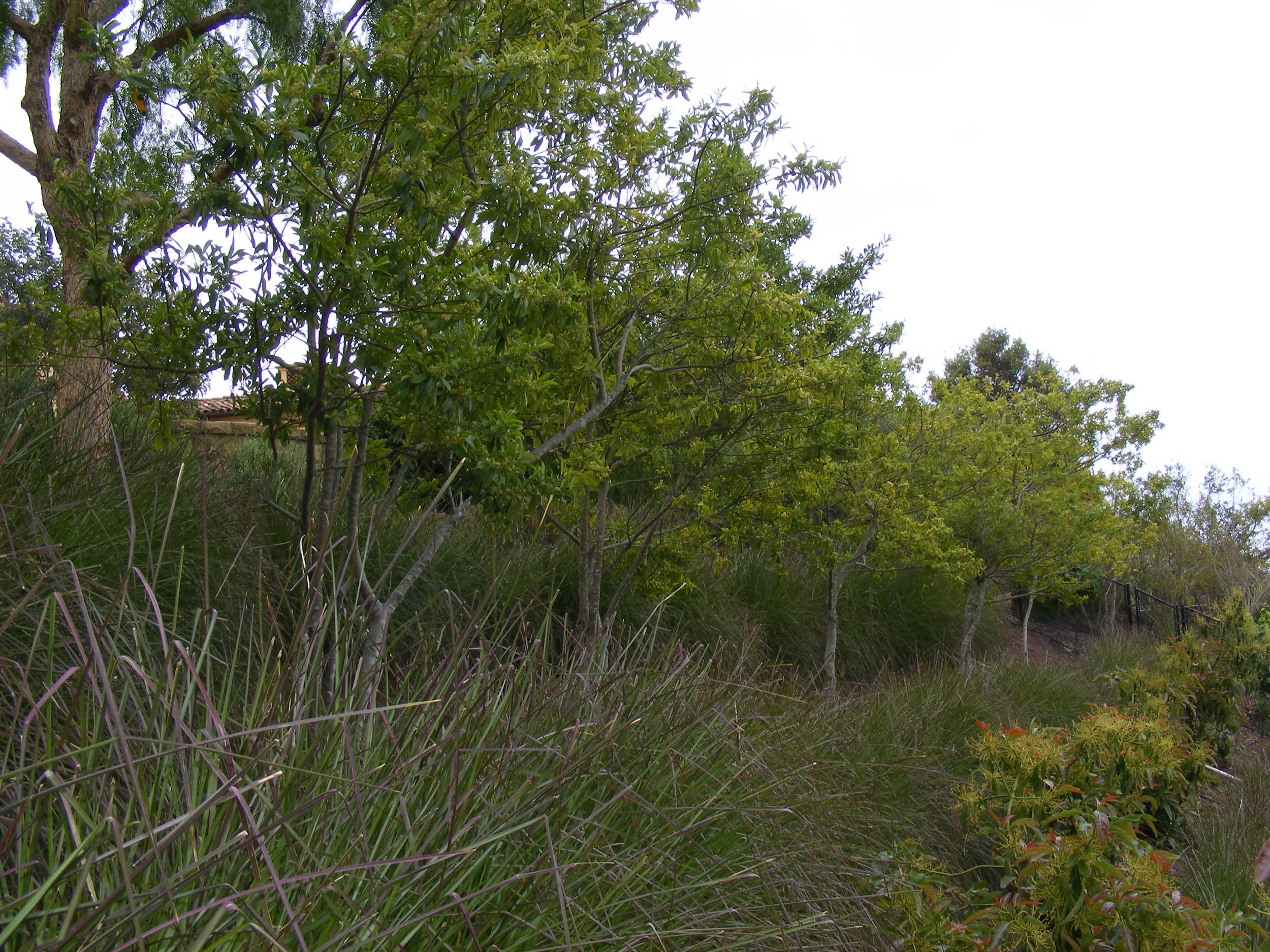

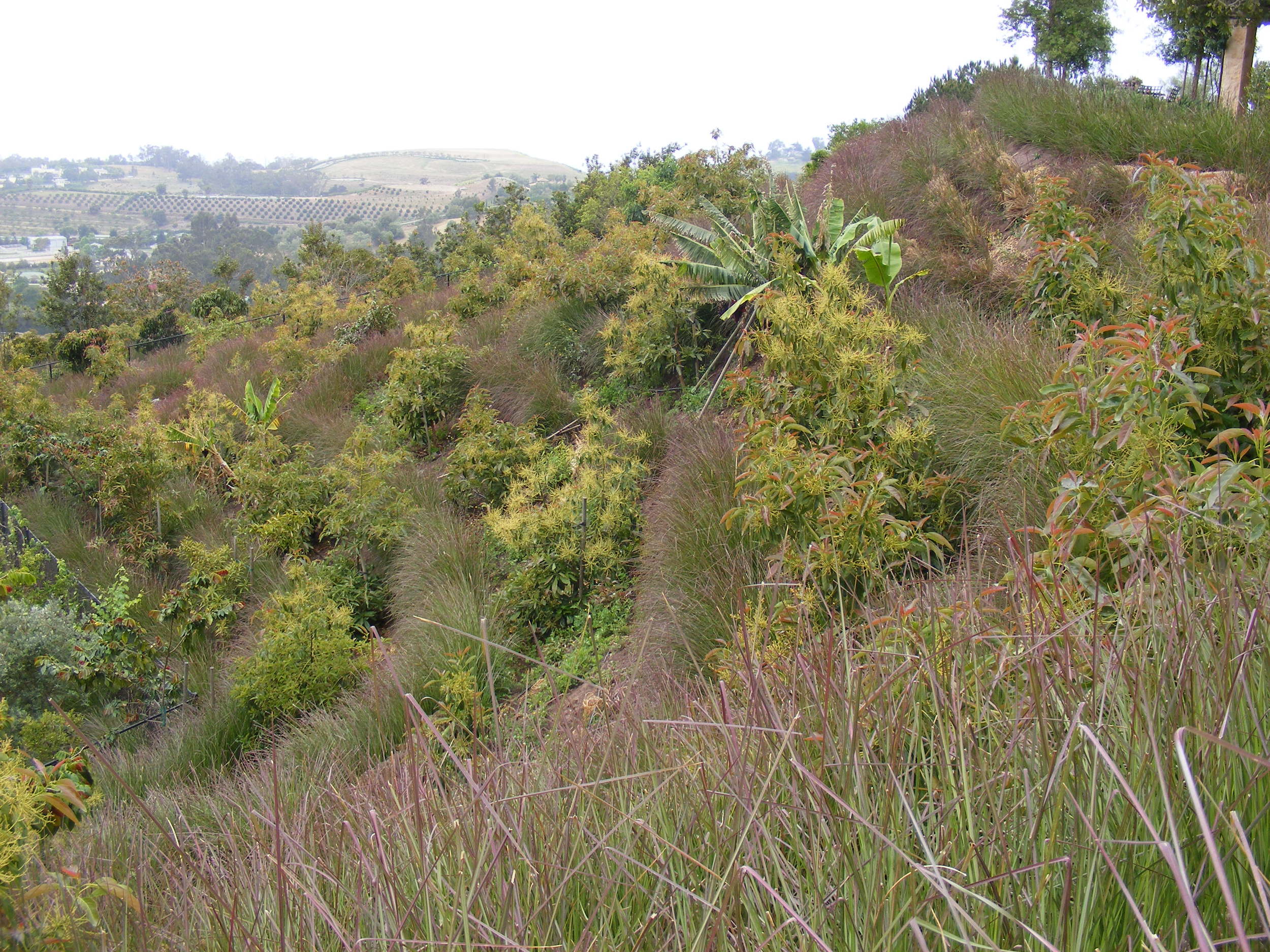

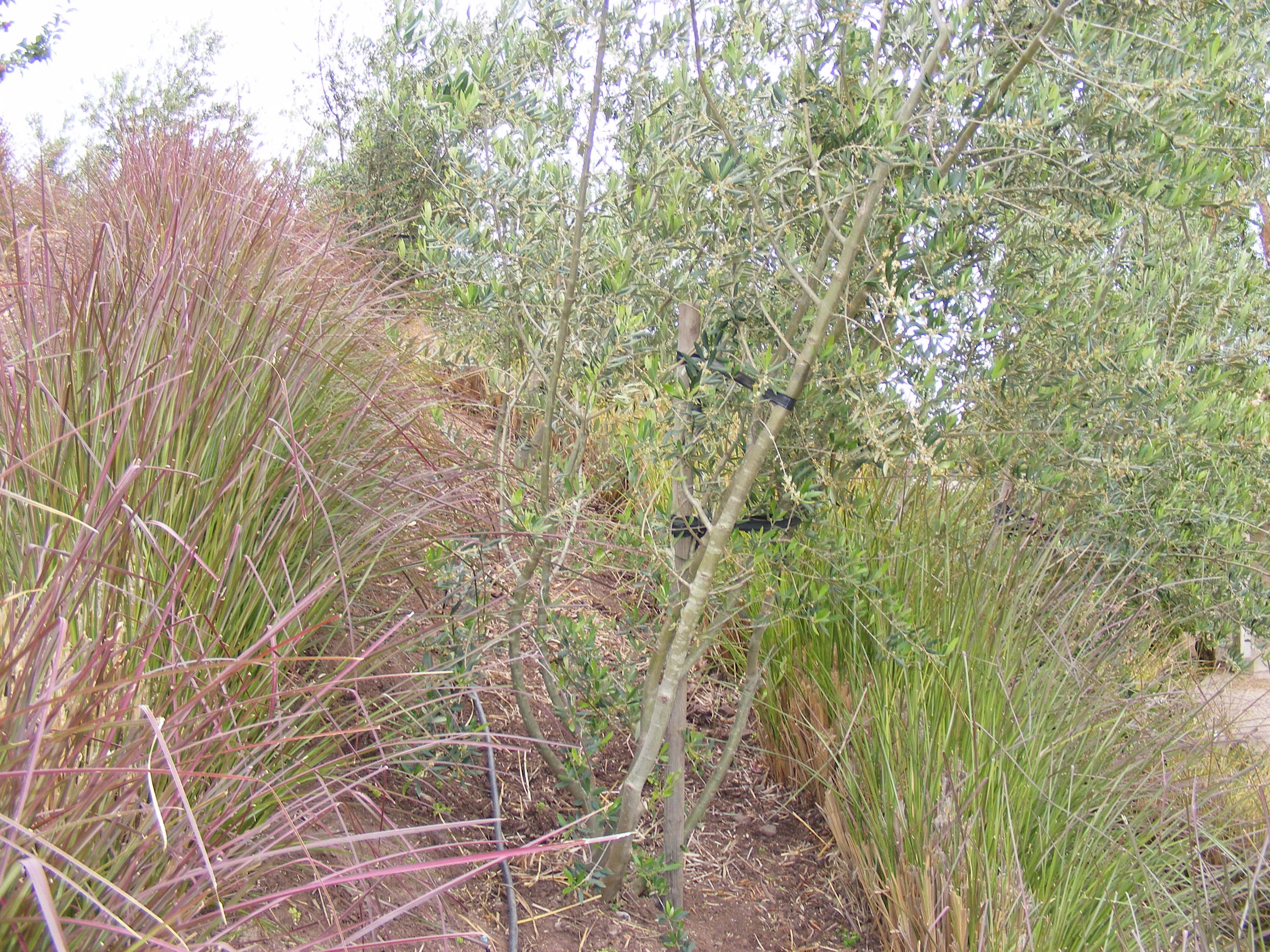
Agricultural Applications
- Controls surface erosion, traps sediment, controls runoff, increases soil moisture recharge
- Stabilizes steep hillsides cleared for crop production or fire protection. Stabilizes farm roads, adjacent slopes and drainage courses.
- Protects the watershed, slows down and spreads rainfall runoff, recharging groundwater reserves reducing siltation of drainage systems, lakes and ponds.
- Prevents the movement of fertilizers and agricultural chemicals off farm protecting our groundwater and watercourses.
- Rehabilitation of land and gullies, landslide areas and misused land
- Added benefits in cropping systems are moisture conservation, improved nutrient status, better plant growth and higher yields
- Vetiver is not competitive with adjacent crop plants and can be trimmed to increase tillering and provide mulch.
- Vetiver has been used to reclaim soils and increase site productivity in places that were previously believed to be totally unproductive.
Phyto-Engineering
Phyto-engineering is defined as engineering design focused around the ability to utilize plants and biological systems to accomplish engineering goals.
- It is based on the self-designing capacity of ecosystems
- It relies on system approaches
- It conserves non-renewable energy sources and supports biological conservation
Due to Vetiver's deep, massive and very strong root system and dense, rigid, compact foliage Vetiver is proven, effective, efficient and low cost in comparison to other "hard" engineering alternatives.
- Vetiver controls erosion, binds soil together, controls runoff and sediment flow and absorbs excess water from the soil
- Vetiver stabilizes cut and fill slopes, shallow landslides or soil slips protecting roads, railways and building sites
- Vetiver stabilizes creek and stream embankments, reservoir and pond banks.
- Vetiver strengthens earthen dams and ensures the integrity of dam walls, canal banks and drains.
Phytoremediation
Phytoremediation is the use of plants for a wide variety of environmental improvements. Phytoremediation is one method of Bioremediation which is the use of naturally occurring organisms to return an environment altered by contaminants back to its original condition. Vetiver is a breakthrough application for environmental protection due to its effectiveness in controlling runoff, absorbing excess moisture, excess nutrients and toxic compounds and its resistance to toxic compounds,
- Vetiver controls runoff keeping agricultural or animal waste out of watersheds, water courses, reservoirs, and the ocean
- Vetiver controls the flow of garbage leachates in landfills while stbilizing their slopes
- Vetiver functions as a primary species in artificial wetland wastewater treatment
- Vetiver removes phosphate and nitrate along with other toxic compounds

